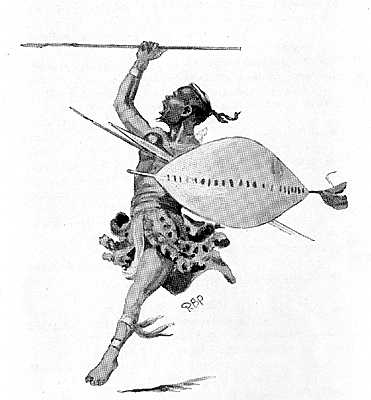Scott Braithwaite's main argument is that the Carpinteria Warriors don't dance or otherwise mock Indians. Therefore, the mascot can't be offensive. He repeats this over and over:
There are no physical representations of a Warrior running around making fun of anything or speaking in strange Indian dialects in order to imitate Native American prayers or recitations. Nobody depicts a Warrior in an unflattering light.
You won't find anyone running around "playing Indian" or attempting to imitate or mock a Native American generally or a Warrior specifically. We do not use real feathers. There is no dancing.
Indian chief = stereotypical
Braithwaite doesn't address this point because Perez didn't press him on it. But Carpinteria's mascot is a Plains Indian chief. This is an extremely common Native stereotype in American culture--perhaps the most common stereotype.
Moreover, it has nothing to do with the California Indians who lived in the Carpinteria region. These California Indians didn't look anything like Plains Indian chiefs. So the mascot creates the false impression that all Indians = Plains Indians.
The same applies to the Warriors name. Central California's Indians fought to defend themselves, but they weren't primarily warriors. Perhaps the Plains Indians were, although they might argue the point. But the name creates the false impression that all Indians = warriors.
These false impressions lead to an overall impression that Indians are people of the past. That they were noble chiefs and warriors but are nothing now. That once their primitive and warlike ways failed to win the day, they faded into the woodwork.
In Carpinteria Warriors Harm Children, I noted the harm of Native stereotyping. Braithwaite wasn't able to dispute this harm. Worse, he hasn't admitted that the Carpinteria Warriors name and mascot are stereotypical.
So let's hear your answers, Scott:
Perez compared the Warriors to a hypothetical Blackskins team and Braithwaite ducked the point. So let's make it explicit, Scott. Suppose Carpinteria had the same Warriors name but its mascot was a solemn and dignified Zulu. You know, a half-naked black warrior with a bone in his nose and a spear in his hand. Would you consider that a problem: yes or no?
Braithwaite also ignores the canoe and arrowhead on the school district's logo. Are these accurate images from Central California's Indian cultures? Do they contribute to the notion that Indians were primitive and warlike? That all Indian cultures were the same?
In short, Scott, are they stereotypes: yes or no? Please answer.
Warrior culture = sacred
Marcia Perez pointed out the sacred nature of what she calls "warrior culture":
Perez may have grossly generalized about how hundreds of Indian cultures view their chiefs and warriors, but she has a point. Many chiefs and warriors were honored or revered even if they weren't considered sacred. Feathers were a mark of honor or reverence even if they weren't considered sacred.
Sure, a feather-wearing "chief" who dances and whoops at a game mocks Indians. A solemn chief or warrior image on the wall isn't as bad, but it's still subtly mocking. How? By implying that chiefs and feathers have no sacred or religious meaning anymore. By implying that it's okay to associate them with trivial sports contests. By implying that pimply-faced children are "warriors" just like Crazy Horse, Sitting Bull, and other Plains icons.
To reiterate, the Carpinteria mascot associates Plains warriors with high-school athletes. This brings a revered Indian icon down to the level of a juvenile jock or raises the jock to the icon's level. Either way, the icon is belittled and the jock is glorified at the icon's expense. If little Johnny is a warrior like Crazy Horse, then Crazy Horse is a warrior like little Johnny.
Perez used the Pope as an example:
Similarly, it would be wrong to have the Pope judging a Miss America pageant, an American Idol show, or a pig-calling contest. It wouldn't matter if the Pope acted with dignity and the audience treated him with respect. His mere presence at these secular events would be an affront to everyone who considered him a revered symbol of their beliefs. Christians would protest just as they do whenever one of their icons is misused.
Conclusion
Get the picture, Scott? If not, here it is again. The question isn't whether your mascot whoops or dances. It's 1) whether your mascot is stereotypical and 2) whether it trivializes Indian chiefs and warriors by associating them with child-athletes who haven't earned the honor. If you haven't realized it yet, the answer to both questions is yes.
For more on the subject, see Carpinteria Warriors Harm Children and Team Names and Mascots.
Below: A replacement warrior in case Carpinteria has to give up its stereotypical Plains chief.


1 comment:
I think Braithwaite is bigoted, why else defend such a trivial issue? Also I think Perez came off as a bit too emotional and self righteous.
Post a Comment